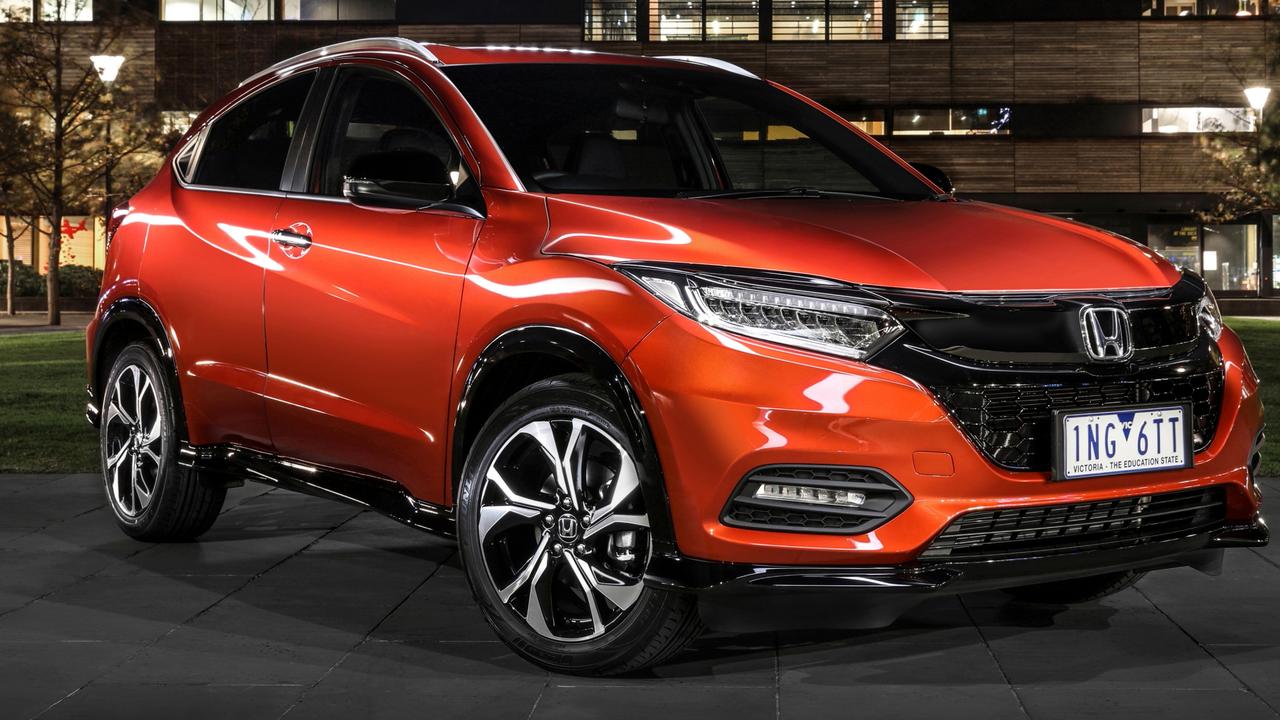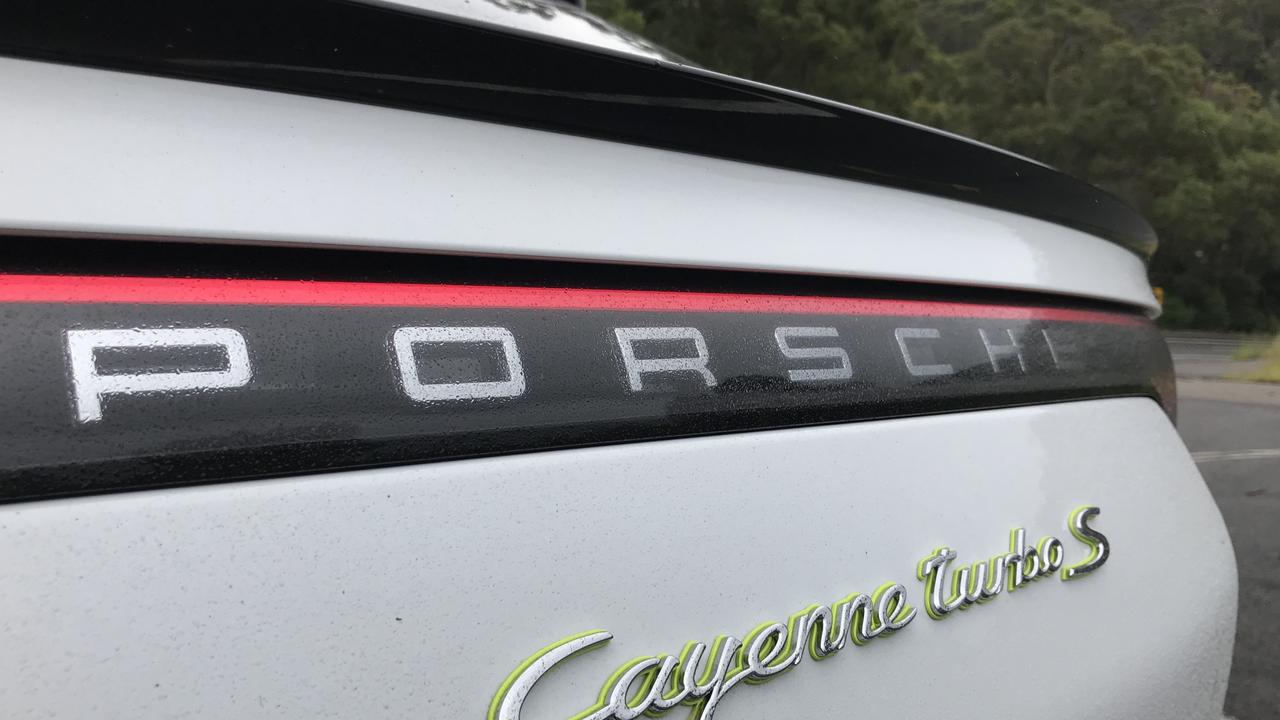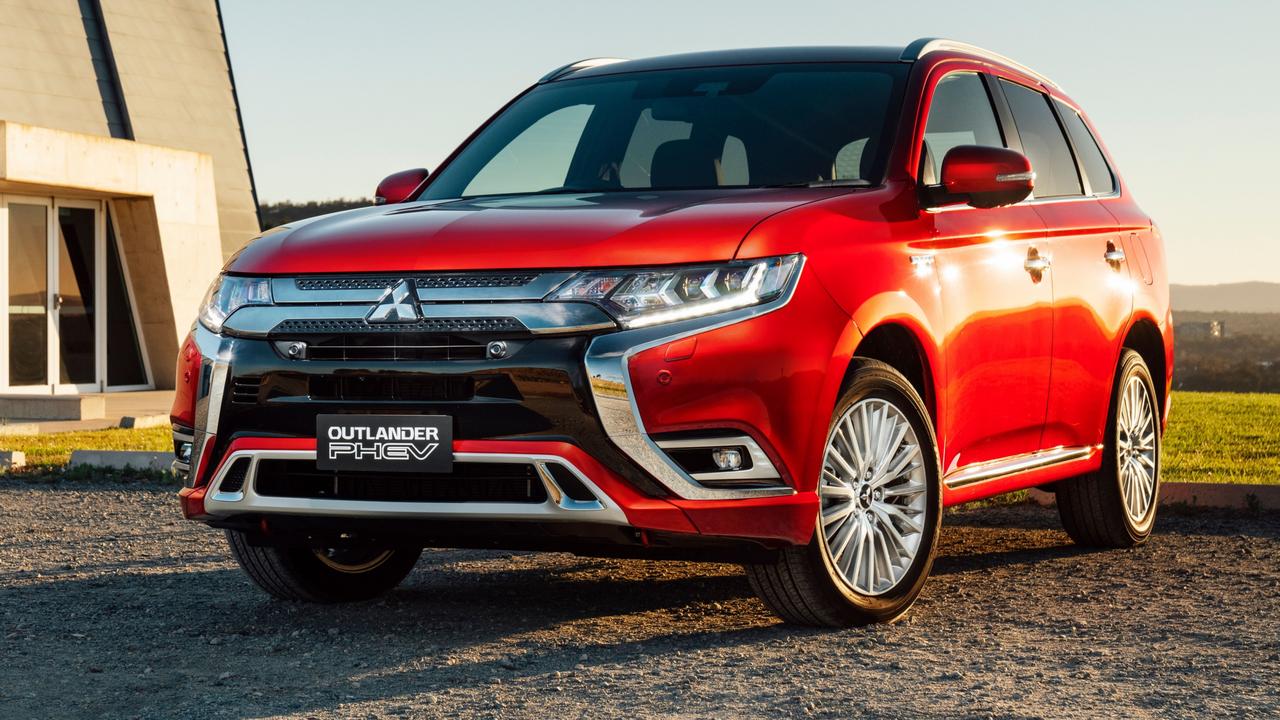Mazda CX-8 seven-seater SUV is not too wide, not too small
Mazda’s latest SUV has lofty ambitions as it attempts to steal customers off the more fancied German brands. One feature will help it.
The Mazda CX-8 is a boutique model for bountiful families. This stylish seven-seater is beautifully finished but lacks the interior space of the equally well-presented and only marginally more expensive CX-9.
The CX-8’s diesel engine likewise confines its appeal to families who travel decent distances on a daily basis.
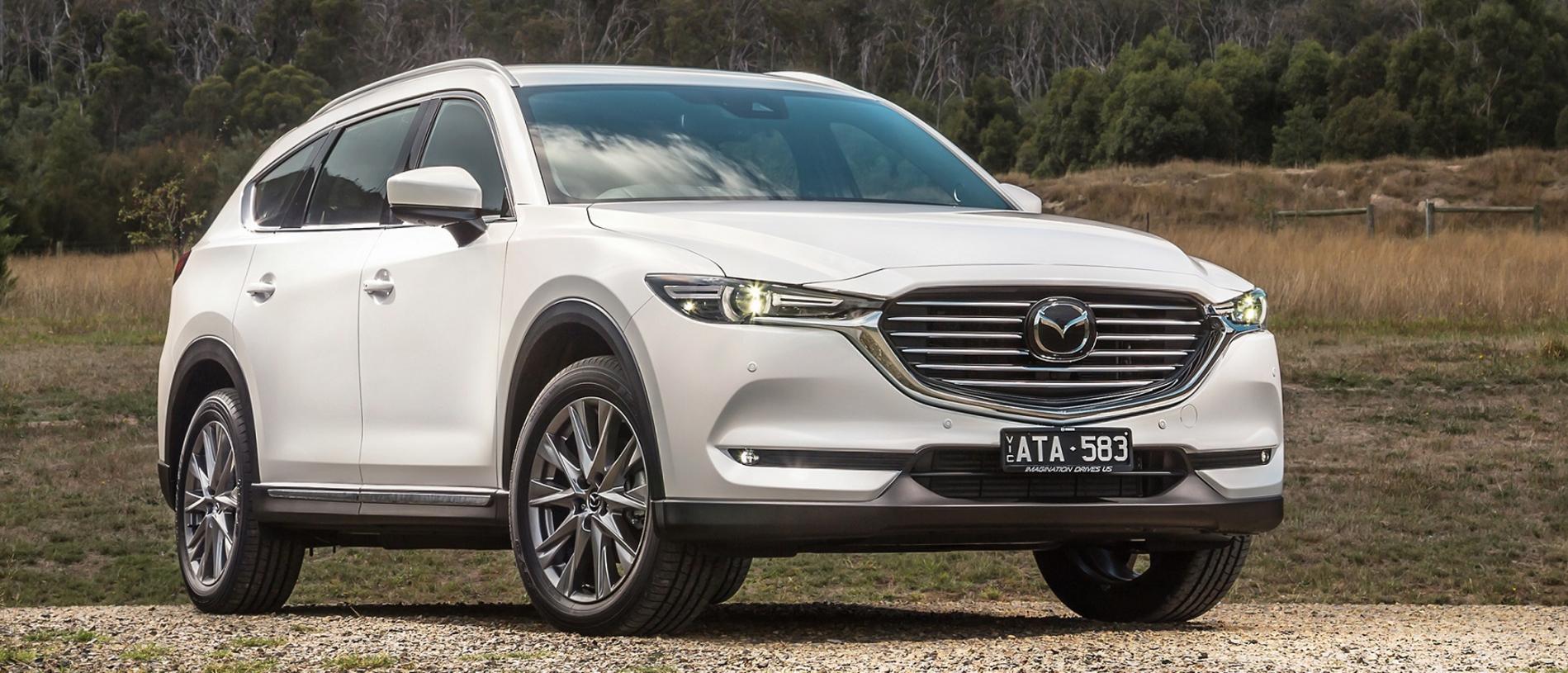
Logic suggests it might have been smarter to drop the diesel into the CX-9 line-up but Mazda opted to build a bespoke vehicle that’s as long as the CX-9 but noticeable slimmer.
Presumably someone determined that families with small kids didn’t need the extra width. That someone hasn’t dealt with a small tribe. If you can live with the above caveats, the CX-8 may be the niche vehicle for you.
Value
The $62,590 sticker price will translate to about $67,000 in your driveway. Mazda hasn’t skimped on its top-spec Asaki version — nor should it at this price — so the “mainstream premium” mantra is evident in the quality of the components and attention to detail.
Ten Bose speakers are strategically positioned around the cabin, the inlays are real wood and the upholstery is real leather, there is heating for the steering wheel, front seats and outboard second row pews and the headlamps are LEDs.
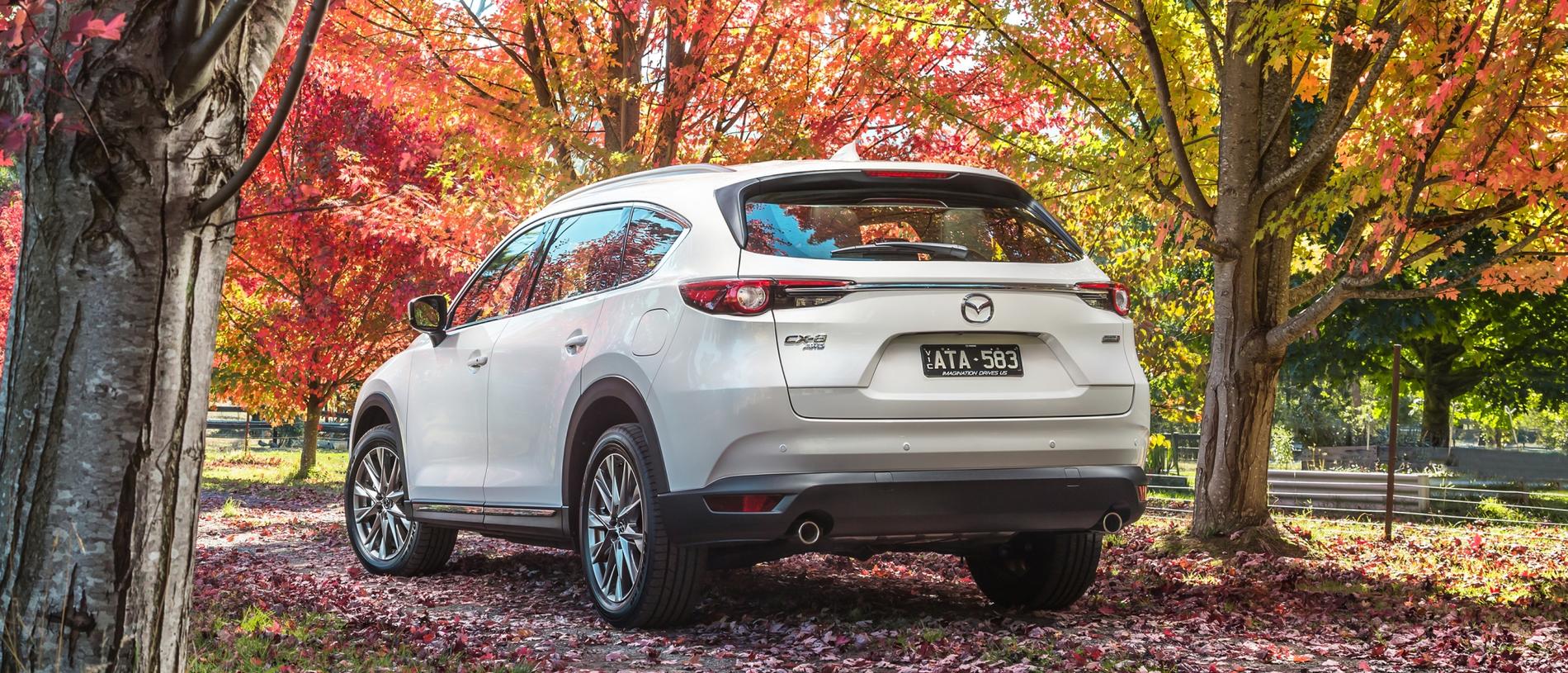
Service intervals are 12 months or 10,000km and the capped servicing schedule averages out at $354 annually over the first five years.
Fuel costs, as expected with a diesel, shouldn’t break the budget. Mazda quotes 6.0L/100km in combined driving or 6.9L around town. We returned 7.5L and conscientious owners could probably match the claim.
Comfort
Credit to Mazda for making such an attractive vehicle — the CX-8 looks the business inside and out. Noise suppression is good in all three rows though over coarse chip roads there’s a faint but tolerable moan from the low-profile tyres on the 19-inch wheels.
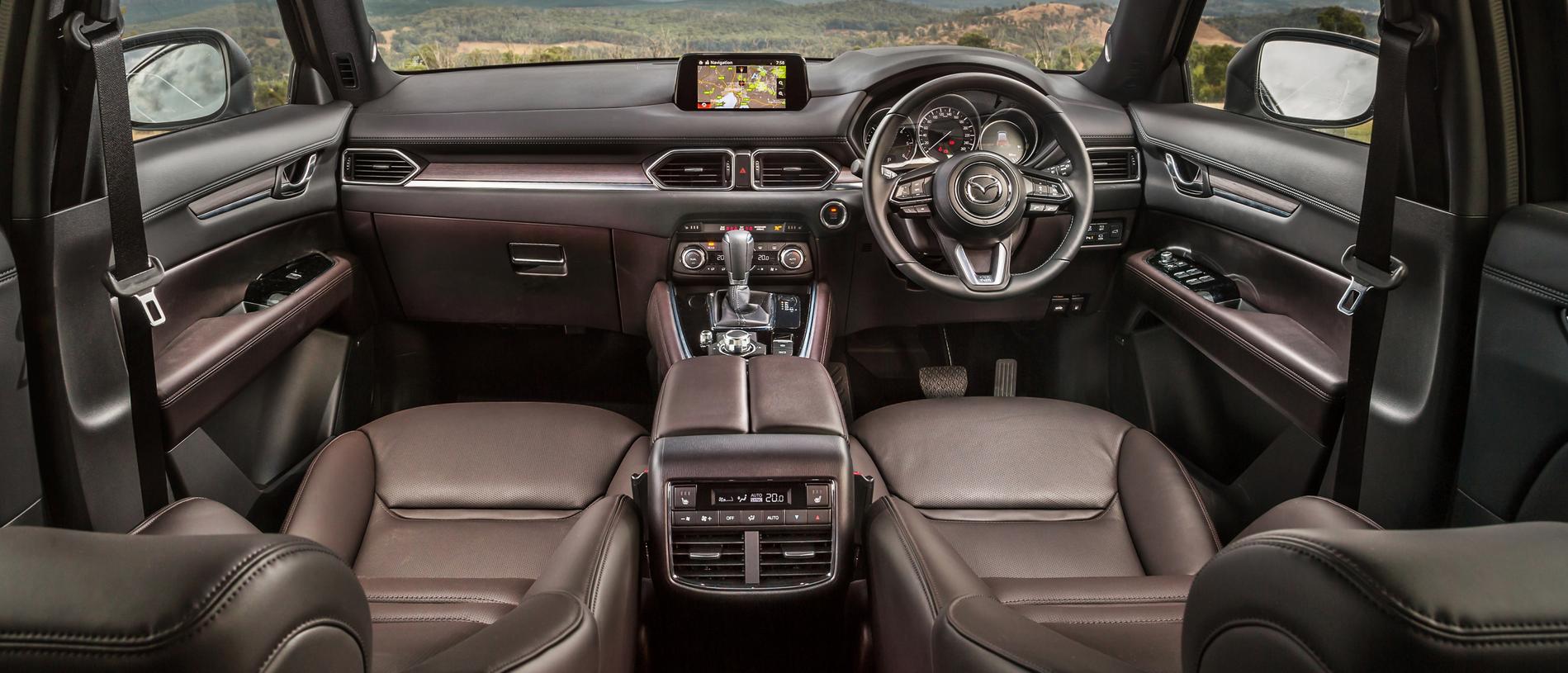
Australians’ preference for bigger-wheeled versions of any vehicle shows many owners are happy to live with the loss of comfort for the sake of having a wheel that fills out the guards.
Mazda’s infotainment finally has smartphone mirroring along with satnav and a 360-degree reversing camera.
The head-up display reduces fatigue and distraction by keeping the key data in your line of vision and the cameras quickly pick up the plethora of speed signs that festoon urban environments.
There are aircon vents for the second row but none in the third. Ideally the back two seats are going to be for occasional use or for young children. There’s not a lot of room back there, particularly if the second row occupants take advantage of the slide and reclining functions built into those pews.
Safety
Solid scores in terms of physical robustness and active safety earnt the CX-8 a five-star ANCAP rating last year. Standard gear includes autonomous emergency braking, adaptive cruise control, blind spot and lane departure monitoring and rear cross traffic alert.
Adult occupant protection was rated at 96 per cent, child occupant protection at 87 per cent, vulnerable road user protection was judged to be 72 per cent and the active safety aids earned a 73 per cent rating.
Driving
No one fights like family does. That makes the CX-8’s life tough when it is taking on the established CX-5 five-seater and acclaimed CX-9 seven-seater.
Effectively a hybrid of the two, the CX-8 lacks the performance of the former and doesn’t feel as planted in the turns as the latter.
That’s more a compliment to its predecessors than a criticism of the CX-8 but the drive experience isn’t as satisfying as its siblings. The CX-8 has a premium commuter-car feel, rather than leveraging Mazda’s signature chassis and suspension dynamics.
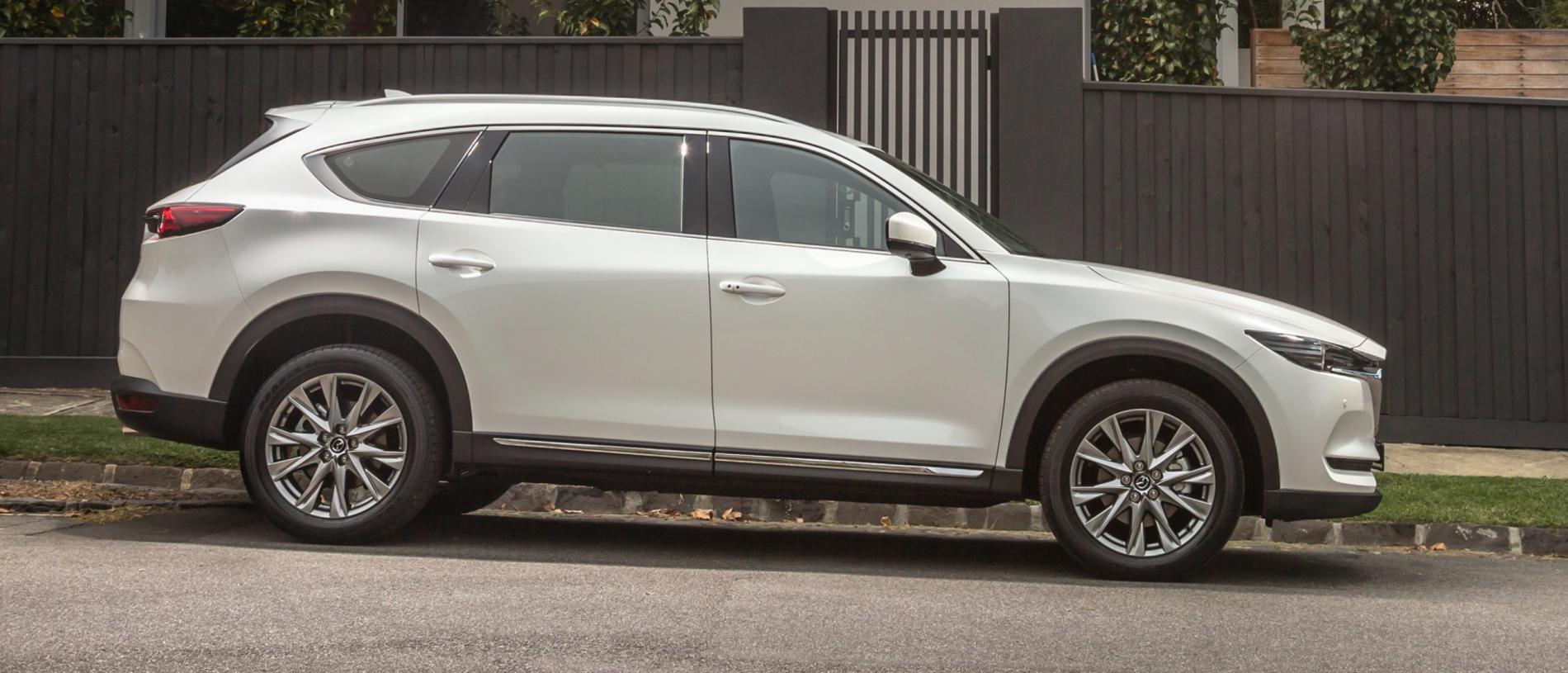
That said, Mazda should know what the target audience wants, given the degree of research and focus-group analysis car companies undertake before launching a new car. Sales of 1400 so far this year indicates Mazda is on the money.
Acceleration in the CX-8 is more than adequate and the steering is still sharp and well weighted. The six-speed automatic doesn’t make its presence felt going up or down the gears and, once warmed up, the diesel is rarely heard.
That lets you concentrate on getting from point A to B while enjoying the interior ambience. The suspension is solid without being too hard, helping the Mazda crossover cope with decent lumps at city speeds or freeway pace.
Head says
Sharp style and smart features make the CX-8 a standout in this segment.
Heart says
The CX-5 is a better drive and the CX-9 is a smarter seven-seater.
Alternatives
Hyundai Santa Fe Highlander, $60,500 plus on-roads
The Santa Fe mightn’t look as sharp but it is packed with similar tech and it’s a better thing to drive.
Skoda Kodiaq Sportsline, $52,990 plus on-roads
Not as polished as the CX-8 but nowhere near as expensive, the Skoda deserves a test drive.
Mazda CX-9 Azami, $66,260 plus on-roads
If you can afford the extra costs and aren’t afraid of its width, the CX-9 is the better vehicle.
Verdict 3.5/5
If the CX-8’s brief was to take on the 5 + 2 diesel SUV segment with a classily designed product, Mazda has largely nailed it. Still, a diesel CX-9 might have been a better option.
Mazda CX-8 Asaki
Price: From $62,590 plus on-roads
Warranty/servicing: 5 years/unlimited km, $1769 for 5 years/50,000km
Engine: 2.2-litre 4-cyl turbo diesel, 140kW/450Nm
Safety: 5 stars, 6 airbags, AEB, adaptive cruise control, blind-spot and lane departure warning, rear cross traffic alert.
Thirst: 6.0L/100km
Spare: Space-saver
Cargo: 209L

